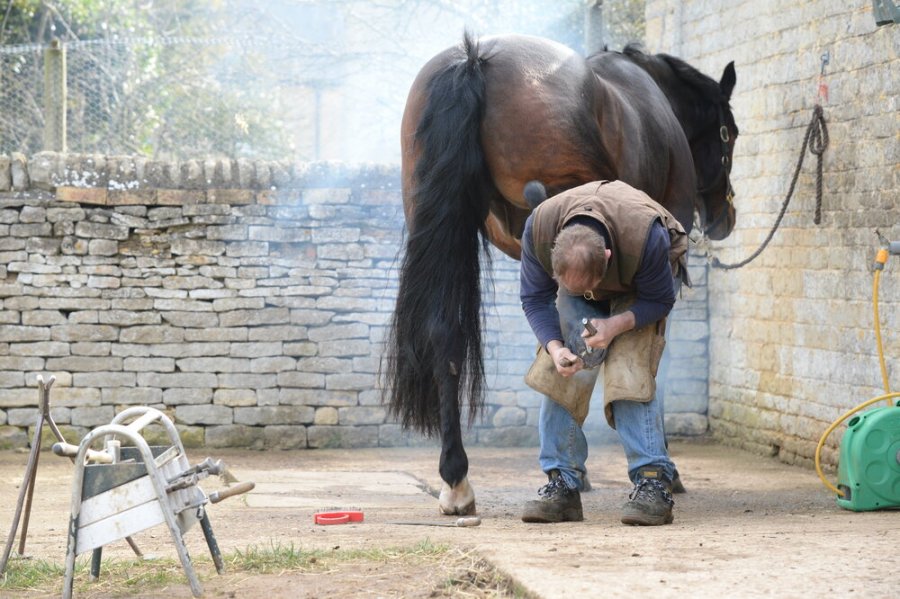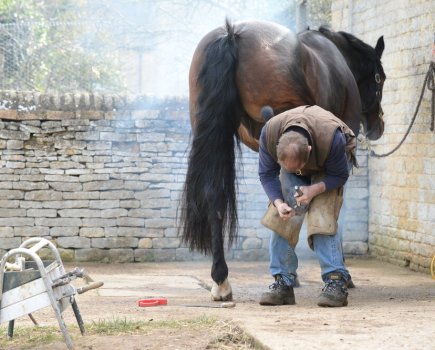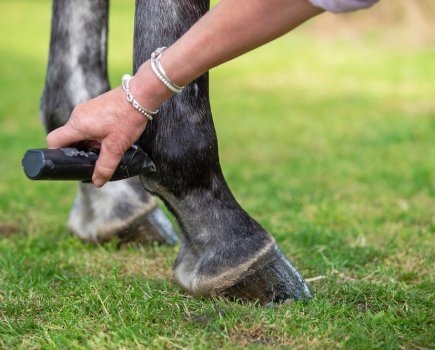Farriery is no longer just about nailing iron shoes onto a horse’s hooves – as a profession it has come on massively since those days. Now it’s not just a way of reducing the wear and tear on a hard-working horse’s hooves; it also plays a fundamental role in keeping horses sound, says Olympic farrier Ben Benson.
We now ask more of our horses than we ever did before, and with those competing at top level all having differing conformational issues, it’s a true team effort when it comes to keeping them sound and on the road.
Originally remedial shoeing involved vets working alongside farriers using 100-year-old information and techniques from textbooks. A lot of the conditions that we shoe for today, however, are far more specific. Whereas farriers once referred to a range of symptoms very broadly, such as navicular, ringbone and sidebone, now they know much more about such issues, with each one treated individually.
This is due in no small part to major advances in imaging techniques and veterinary science, meaning that vets and farriers are able to see things in much greater detail. It also means that farriery has been able to develop – the profession really is moving with the times and becoming ever more technical.
Another aspect that has helped the profession to improve is the internet and social media. Farriers now have access to new methods and information from all corners of the globe from the comfort of their home or forge.
Modern materials
When it comes to materials for shoemaking, steel is still the most popular. This is because the properties that it offers haven’t yet been surpassed – it’s hard enough to resist, and yet soft enough to wear because, if you have something that doesn’t wear out, the horse has to effectively absorb concussion, which isn’t good for their limbs.
Ditching nails
In recent years there have been advances in how farriers cast shoes onto the hoof. Instead of nailing, different kinds of glues or tape are used which can be cast around the shoe like the plaster cast you might sport on a broken arm. Once set, this holds the shoe onto the hoof – a fantastic method for horses who are sensitive to nails or who have flaky hooves.
It’s also great for those with laminitic feet as it helps to manipulate the forces placed through the foot, encouraging the pedal bone to move back up into the correct position.
Using plastic
For other conditions, such as navicular, the go-to shoes should once have been heart bars and rim prints (white plastic shoes) but farriers now have many different types at their disposal.
The popular Steward clogs, for example, are made of a soft plastic (similar to Crocs shoes) with a leather backing, and they have revolutionised how we treat laminitics. Shaped like a bowl, the narrower surface area is at the bottom, while the wider area is at the top, and this focuses all the pressure back up into the hoof, allowing the pedal bone to move back up.
There are also various types of pads available. Normal pads are just nailed on between the shoe and foot, while there are also gels and silicone materials which are squirted into the underside of the hoof. Once set, they support and cushion the foot.
Resin packing/ pads
Resin sits in one minute and turns into a soft gel on the sole. There are also materials like those used by dentists to make impressions, which farriers employ with a pad on the top. These offer the ability to create an orthotic solution to a horse’s poor conformation. Using the pad, a farrier can help to offload the pressure being placed on a joint, tendon or ligament by spreading it out over a wider area.
I often use pads on dressage horses. Like any sporting athlete, such horses suffer from a number of repetitive injuries, so shoeing them is all about managing their injuries and reducing wear and tear.
Nothing a farrier does should work against a horse – you can’t fix issues of conformation in a mature horse, and you can only manage the compensation for that deviation. The problem in the hoof is usually a secondary issue that is coming from somewhere higher up in the leg.
To find a qualified farrier near you, visit farrier-req.gov.uk
Meet the expert: Master farrier Ben Benson qualified as a farrier in 2003. He is an Associate of the Worshipful Company of Farriers and an Approved Training Farrier (ATF). Since 2012 Ben has been one of the lead farriers at Olympic Games. Ben has also worked with the World Class Performance Programme and is the farrier for the British Equestrian Excel Talent Programme. Visit btbensonfarrier.co.uk









